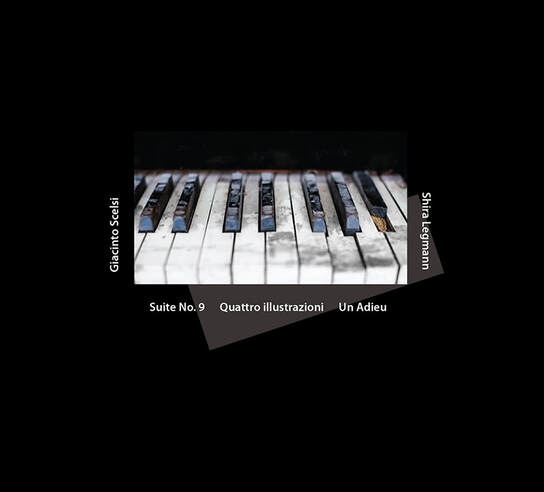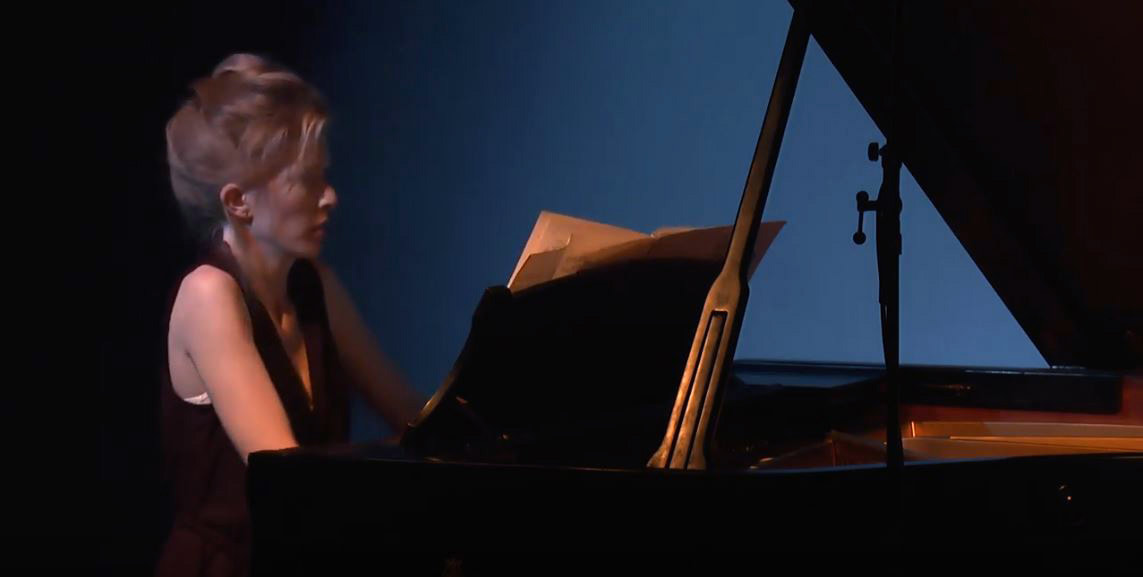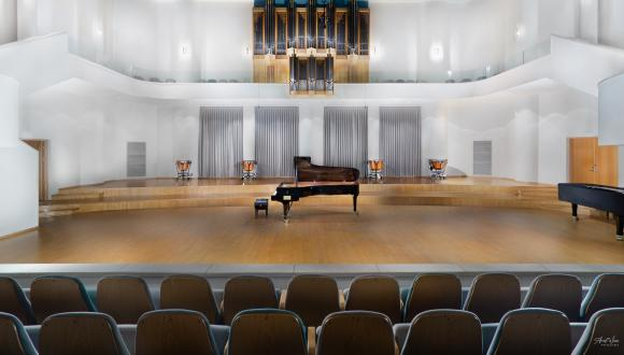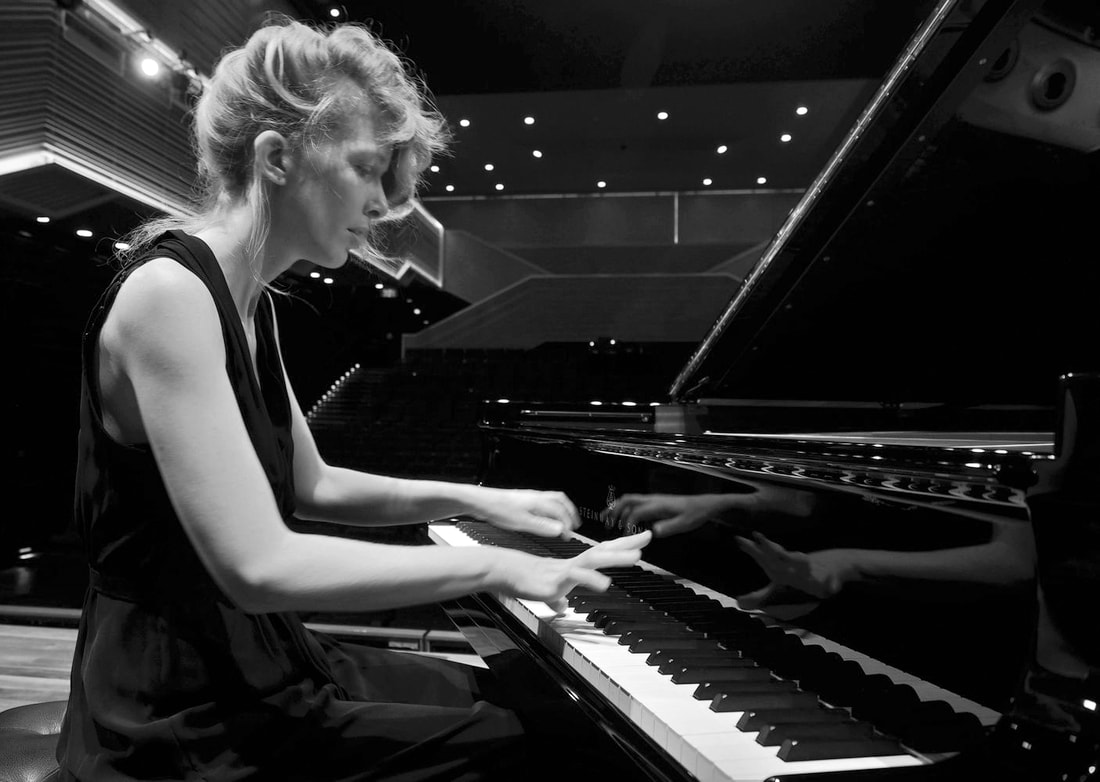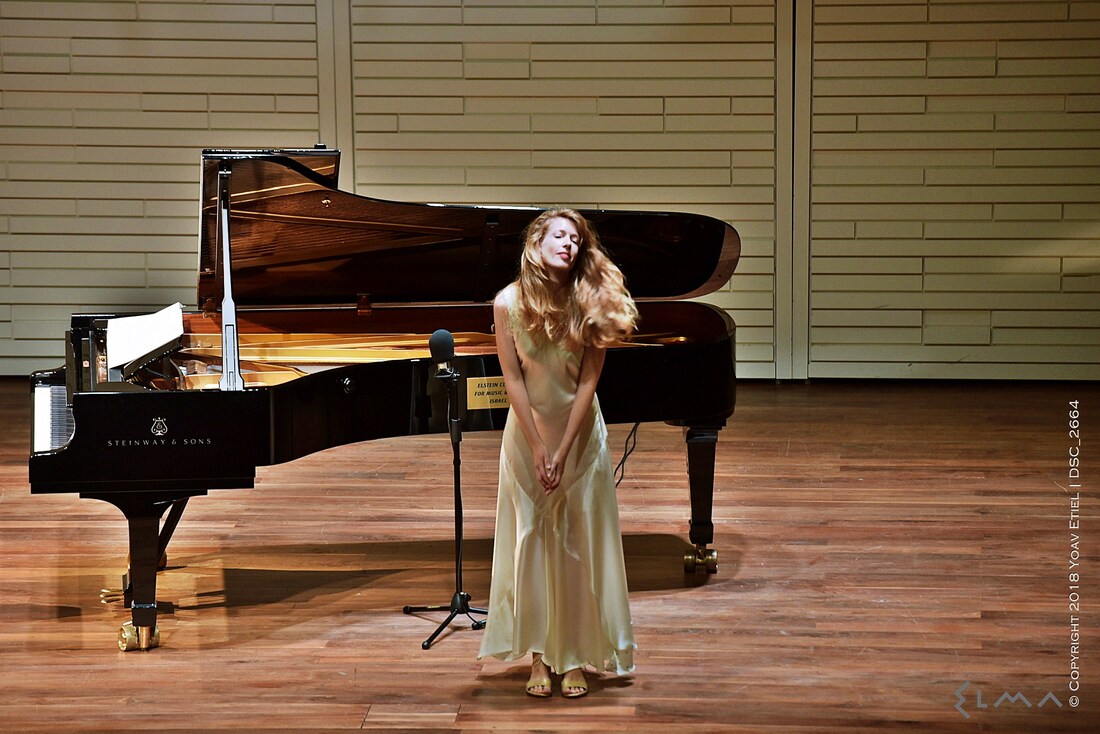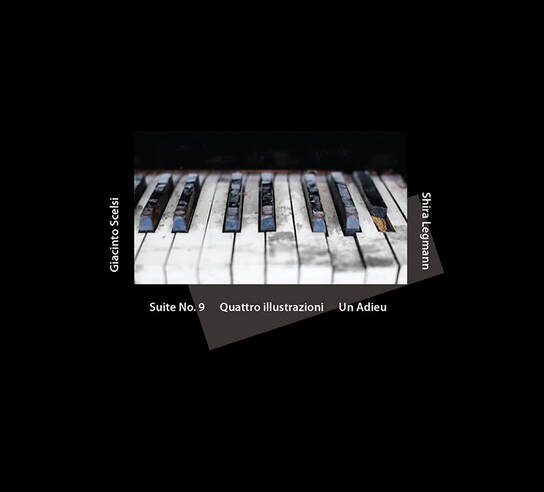|
Q&A with Shira Legmann about Scelsi’s piano works
|
|
"By using minimal thematic materials and small shifts of articulation, all in a free time-signature environment, Scelsi offers a platform for the pianist to play with the gravity points, resulting in an internal logic of syntax and meaning."
|
|
Yuko Zama (YZ): How did you discover Scelsi's music?
Shira Legmann (SL): A friend of mine introduced me to Scelsi’s music in 2011 and I started exploring his piano music. I chose the Quattro Illustrazioni to begin with. The more I dove in, the more I got immersed in it. Around the same time, an offer came from Yoni Silver, to perform a concert in Tel Aviv, featuring a contemporary piece for piano, together with free improvisations integrated between the movements of the piece. I proposed Scelsi’s Quattro Illustrazioni, and this became my debut concert with his music, December 2011, 34 years after its world premiere in Rome. The concert was held in Jaffe Tel-Aviv, and between the Four Illustrations, Yoni Silver, Grisha Shakhnes and Ram Gabay performed free improvisations. It was a great concert. YZ: What kind of qualities or natures of Scelsi's piano pieces that particularly attracted you to perform them? SL: Scelsi has compositions that strike you with their beauty right from the first listening. The Three Latin prayers is a piece like that. However, with other compositions of his it often takes more for us to build an emotional bond. For me, the first encounter with the Illustrations left me intrigued, and that was enough already for me to be drawn in and explore it further. After studying and performing some of his music, I can say that to me, the main reason I admire his music, is his unique syntax of musical phrases, and the freedom he allows for the pianist in shaping them. By using minimal thematic materials and small shifts of articulation, all in a free time-signature environment, he offers a platform for the pianist to play with gravity points, resulting in an internal logic of syntax and meaning. In retrospective, this influenced my playing tremendously. I realize now how those years when I discovered Scelsi were also the years in which I felt I developed my own musical voice. Taking the freedom in shaping a musical syntax, for example in Bach, Haydn, or Feldman’s music, while respecting their written score, became my main focus and interest as an interpreter. I feel that Scelsi’s music purified this process for me, and it was a specific time in my development as a pianist that it all came together. Another thing I admire in Scelsi’s compositions is his ability to create an illusion of a “soundcloud” from the piano. For example, in the opening movement of “Ttai”, he creates an impression of the piano holding a single “om” sound for a long time. In addition to these static-motion movements, his music can also be very dramatic, fierce, and full of charisma, for example in the 2nd Illustration, which describes Vishnu’s metamorphosis into a wild boar fighting Evil. I love that his music is so diverse, enabling a celebration of the rich sound and dynamics of the piano. And finally, Scelsi gifts us with poetic moments too. The final movements of Ttai and Illustrazioni are great examples of this. YZ: Why did you choose Suite No. 9, Quattro Illustrazioni, and Un Adieu for this album?
SL: In 2013, I started working on an “all Scelsi” concert program for the Musica Nova Ensemble. During this search I fell in love with un Adieu and with the “Ttai” Suite no.9. Along with other projects and concerts, I continued devoting substantial time to working on these three Scelsi pieces, and I performed them in different contemporary series in Israel. It was an intuitive choice. These were the three pieces of Scelsi for piano I got attached to, studied deeply and performed. They vary in their size and volume – “Ttai” is a monumental piece, as Scelsi describes it himself: “A succession of episodes alternately expressing Time (or more precisely Time in Motion) and Man, as symbolized by cathedrals or monasteries, with the sacred sound –Om”. |
|
YZ: Suite No. 9 (“Ttai”) and Quattro Illustrazioni are the live recordings of your concerts in 2014. How was your concert experience of each piece? (Or, how did you feel when you were playing these pieces in a concert hall?)
SL: The “Ttai” Suite recording, is taken from a live recital I shared with cellist Dan Weinstein at the Clairmont Concert Hall of the Tel Aviv Music Academy. The full concert program featured: Iannis Xenakis: Nomos Alpha (1965), Cello Solo Giacinto Scelsi: Suite no.9 “Ttai” (1953), Piano Solo Giacinto Scelsi: Trilogy: I.Triphon (1957), Cello Solo Iannis Xenakis: Paille in the wind (1992), Cello & Piano I remember it being a winter night, and I felt a distinctive “quietness”. This allowed me to dive into a deep concentration; The grand D Steinway piano corresponded beautifully and supported my wishes. It was a wonderful experience. Quattro Illustrazioni This performance came very naturally to me. By then I had already performed it in public several times, and It felt very ripe and coherent to me. I knew it well, and I understood where the music wanted to be led to. It was recorded in the frame of the “all Scelsi” concert I mentioned before. Besides being the pianist in the concert, I was also the curator and producer of that concert, so my hands were full. When the moment in the evening came to play the Illustrations, I could finally feel at ease. Un Adieu This recording I made especially for this album. Despite knowing it well, this wasn’t an easy task. ‘Adieu’ means ‘farewell’, and in most cases it is not an easy thing to do - saying goodbye. Some farewells are done with one’s head up high, and some are done with sorrow, tears and regrets. I struggled between the different attitudes. At the end, I realized the music had already decided for me. The music in Un Adieu is constantly moving, a little bit like a funeral march. Except for a few breaths, the music asks the pianist to keep walking and not look back. |
|
YZ: What was the reason why you chose these live recordings for the main two Scelsi pieces to include in this album, instead of studio recordings?
Live recordings are almost never “perfect”. However, they grant us with magical and uncompromising documentation of real music in real time, together with an energy generated by the presence of the audience, which can never be reproduced in a studio recording. Scelsi was said to be a modest artist. He believed that he, as a composer, is merely a mediator. For a substantial period, he composed his piano pieces by improvising: He conceptualized them and then improvised while recording. Later, with the help of friends and assistants, he notated down the recordings and it became a written composition. Since these compositions derive directly from improvisations, I felt the best representation of them would be as recordings of live performances, where there is also an element of risk, surprise and spirit. YZ: Besides Scelsi, are there any particular projects, composers and/or pieces that you are interested in performing or recording in the future?
SL: I am currently working mainly on two projects. There are many great musicians in Israel, and the mentality of Israelis is open, flexible and spontaneous. This allows for opportunities to present new projects. There is a small yet strong community of experimental musicians which feels like home. However, the main challenge I have is to make sure these projects find a way to come through despite national lockdowns and restrictions due to the covid-19 pandemic. It is a strange time to come up with new plans, as one is struggling to make sure current plans are executed and performed. So far, Israel is the first country in the world to call for a second lock-down. Concerts, as many other cultural events, are considered inessential in time like these, and are most of the time canceled or postponed to an unknown date. Being given the opportunity to release an album (especially now) is an empowering and rewarding experience. It gives a reason to keep going and allows for a platform to share music with the audience. I also find that collaborations with other musicians at a time like this, where social distance is obligatory, nourishes a mutual motivation to keep the music making going. I hope that with time, as the world finds some peace and hopefully a vaccine and cure, generating new ideas will follow as well. (Interview conducted by Yuko Zama, August - September 2020)
|
|
Shira Legmann - Giacinto Scelsi: Suite No.9 / Quattro illustrazioni / Un Adieu (elsewhere 013) is available on CD and digital album (16-bit AIFF and 24-bit HD FLAC). Also available on Bandcamp.
|
